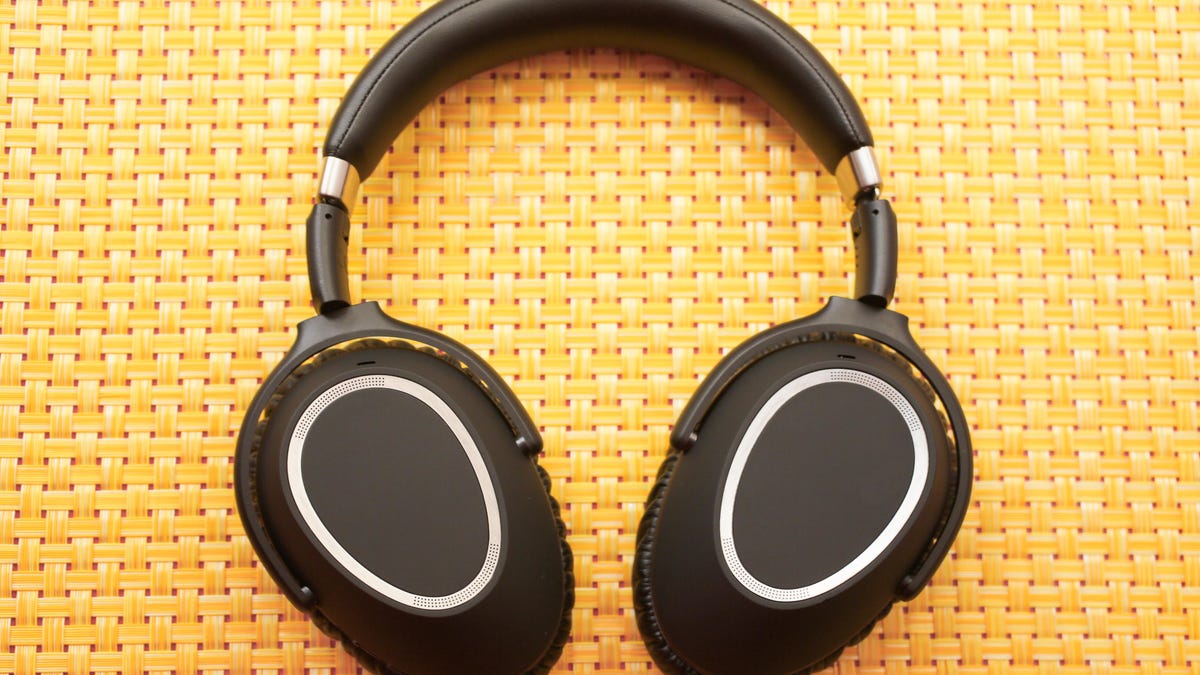Sennheiser is ready for the iPhone 7's wireless future (with a 3.5mm cable, just in case)
Headphone head honcho Daniel Sennheiser talks the Apple iPhone 7, immersive sound and how the future of sports TV will let you sit where you want.

Apple's decision to launch the new iPhone 7 without a 3.5mm jack has put wireless headphones in the spotlight. But leading headphone manufacturer Sennheiser will continue to offer listeners a choice.
"We're ready for it," CEO Daniel Sennheiser told CNET, referring to the company's range of both wired and wireless headphones. "For some consumers [wireless] is exactly what they want. Others don't want it, and they have the choice...What I don't like is if you don't have a choice."
By ditching the venerable 3.5mm jack and launching cordless AirPods, Apple is edging headphones toward wireless. For now, the company is hedging its bets by including a 3.5mm adaptor with the iPhone, and the proprietary Lightning connection is still a wired option. But wireless headphones are definitely ready for their solo.
"Bluetooth initially had a quality problem. That's over," noted Sennheiser. "With the new PXC 550, for the first time we're able to get absolutely good audio quality and noise cancelling at the same time and have the whole thing wireless."
"Wireless also has its disadvantages," the Sennheiser boss admitted. "You have another device that you need to power, and when the power is off... That's why with every wireless device we also give a cable, and they all work even without a battery as a traditional headphone, which is quite a trick as well."
I met Daniel Sennheiser, joint CEO of the 70-year-old German company, a couple of hours before Apple's announcement, at a new exhibition Sennheiser is sponsoring in London. The exhibition, "You Say You Want a Revolution? Records and Rebels 1966-1970" focuses on the intertwined musical and social changes of the late 1960s. It includes recordings of the 1969 Woodstock festival remastered in Sennheiser's Ambeo immersive sound system.
Ambeo records sound from all directions at an event such as a live concert, with dual mics that mimic the position of your ears. It's the sonic equivalent of 360-degree video -- stereo on steroids.
Headphone boss Daniel Sennheiser.
"Ambeo really makes you feel like you're there," said Daniel (I'm going to call him Daniel, to distinguish the man from the family business that shares his name. And because we're basically best friends now). "It's much more immersive, you don't hear the speakers anymore. It creates a much more emotional experience than you have with traditional mono or stereo. When you went from mono signal to stereo signal it was quite a revolution, and this will be similar."
Ambeo has already been used to record live music. "You don't have to have visual virtual reality," he said. "If you're at home listening to a live concert and moving around in the soundscape, you just close your eyes and it's a very touching experience."
Of course, audiophiles will know this kind of immersive sound isn't entirely new. "Binaural or immersive audio has been in our research labs for quite a while," Daniel noted. "The KU-100, which is basically a dummy head with microphones inside acting as artificial ears, is 25 years old." But today the concept of "immersion" is having a moment, encompassing you in virtual reality or in high-tech sound systems like your local movie theatre's Dolby Atmos setup.
Daniel said you won't need to fork out for an expensive multispeaker setup to enjoy the benefits of immersive audio. Ambeo will be in headphones "very soon", he said, even though headphones are "more tricky because you have to get all that immersive audio into a binaural signal -- at the end we only have two ears."
It's not just music that could become more immersive. "We're publishing some blueprints now how to do it for cinema, how to do it for live recording, how to do it for sports," explained Daniel.
When sound is recorded in different parts of a sports arena, your experience can be customised even when you're not there. "Maybe in the future [while you watch on TV] you can choose where you want to 'sit' in the stadium," Daniel said, estimating that such a development could be 12-18 months away. "You can choose to sit in your team's corner and hear the guys cheering your team and not the adversary."
Sounds good to us.
"You Say You Want a Revolution? Records and Rebels 1966-1970" is at the Victoria and Albert Museum in London until 26 February 2017.

